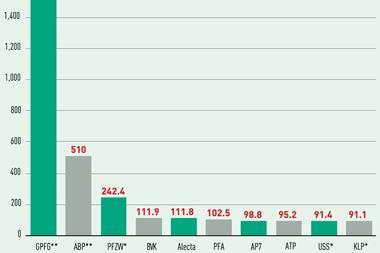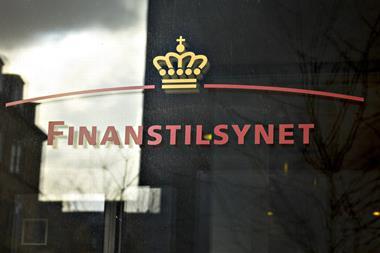- Total assets of top 1,000 pension funds: €9.73trn (2023: €8.95trn)
- This equates to an asset increase of €775bn
- Year-on-year change: +8.7% (2023: -6.8%)
European pension assets have recovered to reach a new high of €9.7trn, according to IPE’s annual Top 1000 Pension funds study. This follows a sizeable contraction as measured in last year’s study, when assets fell by almost 7%.
Overall, Europe’s pension funds gained €775bn in net assets over the year, the largest single-year increase since 2021’s hike of €810bn.
France, which is enjoying a renaissance in occupational pensions following controversial reforms enacted by president Emmanuel Macron, experienced the largest net increase in assets at 25.3%. The CEE region followed in close succession, with a 23.5% increase.
Norway, dominated by the giant Government Pension Fund Global, recorded a 17.4% year-on-year increase in assets. In the Netherlands, the country’s pension funds together reported a 7.8% increase year-on-year.
In the Netherlands, as in the UK, pension funding is in the healthiest state for many years, underpinned by buoyant asset returns and higher discount rates, putting downward pressure on liabilities.
However, UK pension assets continued to fall – down 3.4% this year following a 16.5% drop last year – reflecting the slow decline in corporate defined benefit (DB) scheme asset levels as the ageing cohort of DB scheme members draws down its pensions.
| Assets of Europe’s top 5 pension funds | €bn, latest data |
| Norway Government Pension Fund Global | 1,549.0 |
| Stichting Pensioenfonds ABP | 510.0 |
| Stichting Pensioenfonds Zorg en Welzijn (PFZW) | 242.4 |
| BVK | 111.9 |
| Alecta | 111.8 |
Source: IPE Research
Top funds see equity and bond exposure rise
The 10 largest funds held roughly the same share of assets as last year, just shy of a third of the overall total.
Our analysis of the top 10 funds’ asset allocation shows that exposure to equities and traditional fixed income grew within portfolios, at the expense of alternatives.
This is consistent with wider markets and is partly due to market effects, with equity markets reaching record highs last year, mainly driven by US stocks. At the same time, institutions have been raising their fixed-income allocations as they expect monetary easing to drive returns from bonds over the next few quarters.
Norway’s oil fund, GPFG, ended the year with a slightly higher exposure to equities and its allocation to fixed income and real estate fell correspondingly.
At ABP, the Dutch civil servants’ fund, the allocation to equities and fixed income was up, with lower exposure to alternatives and real estate.
PFZW, the Dutch fund for the health sector, also had a higher allocation to equities, with lower exposure to real estate and deployed assets in private markets, including private equity and infrastructure.
Alecta, the Swedish multi-employer scheme, saw its exposure to equities increase by six percentage points to 38.3% throughout the year.
To access the Top 1000 European Pensions Funds 2024 report and dataset please click here





























No comments yet